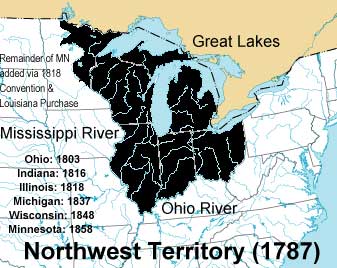Northwest Ordinances Forbids Slavery

On July 13, 1787, the Continental Congress passed the Northwest Ordinance. It prohibited slavery in the Northwest Territories. This was the first act in a continuing struggle over the future of slavery in the new territories added to the United States.
The question of slavery in the new territories of the United States was contentious. North Carolina and Georgia had ceded territory to the federal government to the west to create new states. However, they had one condition that those states allow slavery. Thomas Jefferson had proposed in 1784 proposed that slavery not be permitted in new territories after 1800. Unfortunately, he could not get the proposal passed the Congress.
In 1787 the Congress approved the Northwest Ordinance. The act gave Congress the power to divide the territory into three to five sections and appoint governors. The act also prohibited slavery in the Northwest Territory. At the same time, it also guaranteed the property rights of residents. The effect was that the prohibition on slavery did not include slaves that were already in the territory. In addition, some slaveholders continued to bring slaves into Illinois and Indiana territory. In 1823 Illinois finally banned slavery altogether. Finally, to secure passage, a version of the later Fugitive Slave Act was inserted into the ordinance guaranteeing that slaves who escaped from the South would be returned. Despite the limitation it was a first step in ending slavery.
 >
>